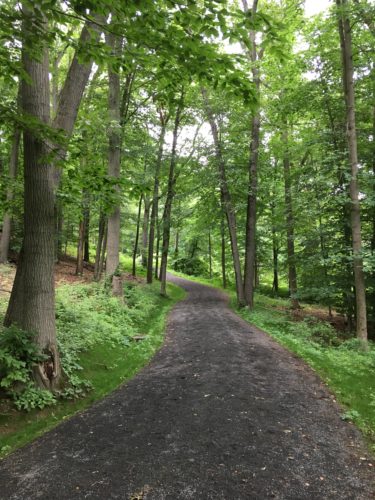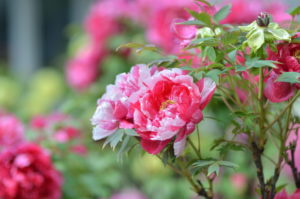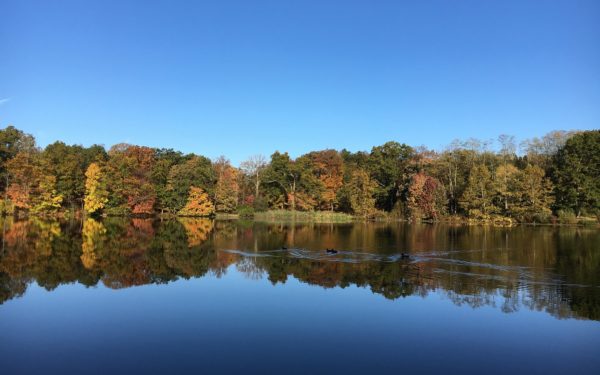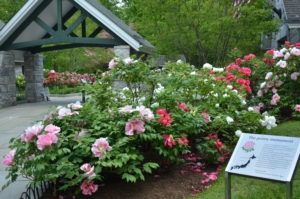
Tucked away in Sleepy Hollow, only 30 miles north of New York City, the beloved jewel known as the Rockefeller State Park Preserve is resplendent in the natural beauty for which Westchester is renowned. It is, however, distinguished by a storied history and the meticulous support of the Rockefeller family.
The property, formerly the Pocantico Hills and Rockwood Hall country estates of the John D. Rockefeller family and William Rockefeller, dates back to 1886. In 1983, the Rockefeller Family generously donated over 1425 acres to the State of New York to safeguard these lands for future generations.
Today, the Preserve is home to forests, fields, streams, and wetlands that support a high diversity of native species of resident and migratory birds, mammals, insects, amphibians, reptiles, fish and aquatic species. Managed by New York State Office of Parks, Recreation, and Historic Preservation, the Preserve is open to the public year-round, sunrise to sunset.
Friends Who Are Family
In 1996, to provide additional support to protect the Preserve, George Gumina, established the Friends of the Rockefeller State Park Preserve. Serving as president and founder, Gumina is also a Rockefeller family member as his wife is the granddaughter of Nelson Rockefeller.

Preserving the land is personal for him as he explains, “Since Uncle John donated the land to the state, Aunt Peggy acted as a steward of the land. It was her primary residence and she loved the land. When she passed, with the family’s support, I began the ‘Friends’ group in her honor.” The organization actively supports educational programs, major exhibits and maintaining the preserve’s unique system of its lovely carriage roads.
Those funds are instrumental in the upkeep of the extensive network of carriage roads that characterize the park. The well-engineered 16-foot-wide, crushed-stone, network of 65-mile carriage roads were designed by John D. Rockefeller Sr. and his son, John D. Jr., over a 40-plus year period from 1910 into the 1950s. The winding roads overlook stunning vistas and serve as the signature feature of the preserve.
Gumina adds, “The carriage roads are what bring everyone here. From Day One, these roads were built for the public to enjoy–they were never just for the family. They are ideal for runners, pedestrians, horseback and carriage riding. You could walk on wide, manicured roads for miles and bring your dogs without worrying about ticks.” Over 400,000 visitors concur and visit the roads from all around the world each year.

Noble Endeavors
The Friends group hosts several fundraising events throughout the year, but the Peony Celebration, an annual cocktail event held in May, is one of the largest fundraisers. The peony garden was donated by a town in Shimane Prefecture, Japan following the tragedy of September 11th to express a gesture of healing and solidarity towards the United States. They sent a gift of 500 peonies, considered to be Japan’s “most noble of flowers.”
Planting this garden was a culmination of true partnership. The Friends initiated a major landscaping project around the park’s gateway to provide a worthy site for this generous gift, while gardeners from Japan came to plant the flowers and teach the preserve staff how to care for them. Each year, it serves as the stunning backdrop to raise funds for the Friends’ ongoing initiatives.
Gumina explains the importance of such events saying, “The state has an $8M endowment donated by the family that many parks do not enjoy that supplements budgetary needs, but maintaining the intricate details of this special property is costly. That’s why the family remains present to provide as much support as we can with four family members actively on the board. This year, we hope to raise enough funds to refurbish Brother’s Path, named for Uncle David and Uncle Laurance, which circles Swan Lake.”

Preserving Beauty for Generations
Rockefeller State Park Preserve recently celebrated a major milestone! The New York State Historic Review Board unanimously designated it as a State National Registry of Historic Places listed in Washington D.C., in recognition of the unique beauty and character of the carriage roads.
According to Gumina, the accolade is well-earned, “I call it the Central Park of Westchester, although I think it’s much nicer than Central Park–I’ve been there. From the carriage roads to Swan Lake to the wonder of its natural setting, it’s just absolutely stunning. It’s a beautiful backdrop for being active as well as those who simply wish to sit and meditate. It’s quite magnificent.”

